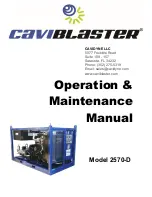
- 6 -
Antenna Feedlines
It is not necessary to use any special length of feedline with receive antennas used in this system.
The front panel controls will compensate for feedline lengths. You should still use a good feedline
and make good connections. DX Engineering recommends
DXE-F6
75 Ω CATV style cable with
weather-tight connectors such as
DXE-SNS6
Snap-N-Seal, both available from DX Engineering.
Combining two Vertical Antennas to improve Signal-to-Noise Ratio
If your location is limited by interference coming from many directions, you can use the
NCC-1
to
enhance signals. It functions as an electronically rotatable directional receive antenna. The
following guidelines apply when
enhancing
signals:
The most reliable and consistent
phasing performance occurs
with receive antenna spacing
less than 1/4-wavelength when
receive antennas are in line with
the desired direction, and less
than 1/2 to 1-wavelength apart
when receive antennas are
spaced at right angles to desired
directions.
Best sensitivity occurs when
receive antennas are more than
1/10-wavelength apart when the
receive antennas are in line with
the desired direction, and more
than 1/2-wave apart when
broadside to the desired
direction.
When enhancing desired signals,
it is preferable to locate both
A
and
B
INPUT receive antennas
as far from local noise sources
as possible.
Adjusting the
NCC-1
will vary the
phasing of the two receive antennas
and shift the pattern to your desired
direction.
The
ARAV3
Active Vertical Antennas are a perfect match for the
NCC-1
.







































